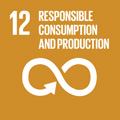- Docente: Chiara Samorì
- Credits: 3
- SSD: CHIM/06
- Language: Italian
- Teaching Mode: In-person learning (entirely or partially)
- Campus: Ravenna
- Corso: Second cycle degree programme (LM) in Environmental Assessment and Management (cod. 8418)
Learning outcomes
At the end of the course the student will acquire knowledge on advantages and drawbacks of using biomass for the production of products and intermediates for the chemical industry. He/she will be aware of the most important platforms for the conversion of biomass into chemicals and biopolymers. The student will know the problems concerning the use of renewable resources for producing chemicals, materials and fuels. He/she will also be informed about Green chemistry concepts and principles.
Course contents
The student will learn the principles of Green Chemistry and the relationship between sustainable chemistry and renewable sources. The main components of biomass (sugar, starch, cellulose, chitin, lignocellulose, triglycerides) will be presented, comparing their structure with those of fossil sources. Different types of biomass pre-treatment (chemical, physico-chemical, mechanical and biological) will be illustrated in order to obtain chemical compounds, biopolymers, and biofuels. The principles and the main concepts related to bio-refineries will be explained, and several examples of existing biorefineries will be discussed. A deepening on algorefinery will be done, illustrating the advantages / disadvantages of algal biomass in comparison to terrestrial biomass. The differences between biopolymers and biodegradable polymers will be explained, together with some relevante examples (starch, polylactic acid, polyhydroxyalkanoates). The applications of some valuable chemical substances obtained from biomass will be examined. Two industrial visits will be carried out; lab experiences will be performed to develop some topics of the course.
Readings/Bibliography
Lecture notes will be available.
Readings for deepining:
Renewables-based technology : sustainability assessment; J. Dewulf, H. Van Langenhove (Eds). John Wiley, 2006.
Green Chemistry for Environmental Remediation, R. Sanghi, V Singh Eds., Scrivener Publishing LLC., 2012Teaching methods
Lectures
Visit of companies
Laboratories
Assessment methods
Oral exam
Teaching tools
Videoprojection of power point slides
Visit of factories
Lab activities
Office hours
See the website of Chiara Samorì
SDGs


This teaching activity contributes to the achievement of the Sustainable Development Goals of the UN 2030 Agenda.
